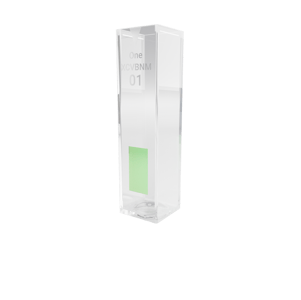Enzymes and kinetics
Hexokinase activity can be easily detected label-free in real-time with NanoCuvette™ One.
Download pdf here.
Enzymes and their activity
Enzymes are biomolecules produced in living organisms. They are biocatalysts in function and speed up specific biochemical reactions. Biochemical reactions are chemical reactions happening in the living cell often with the aid of enzymes. As a catalyst, an enzyme can facilitate the same chemical reaction without itself being consumed. Enzymes are proteins and made of long chains of specific sequences of amino acids which fold into its unique shape. Enzymes have a cleft called the active site, which is the part of the enzyme to which substrates bind. When a substrate is in proximity, the enzyme forms a complementary shape to the substrate in order to bind the substrate. The processivity of enzymes is determined by its activity or the number of units of substrate it can form from a reactant.
Hexokinase is a very important enzyme as it is the first enzyme in living cells to break down glucose (glycolysis) to form energy. It converts glucose to glucose-6-phosphate. This conversion of glucose is the rate-determining step in glycolysis in cells. Hexokinase activity declines rapidly as normal red blood cells age and is an important parameter to study for hemolytic diseases such as anemia.
Activity determination
The quantitative measurement of hexokinase assay is conventionally done using absorbance, fluorescence or colorimetric methods. In a hexokinase assay protocol, glucose is first converted to glucose-6-phosphate in reaction with ATP. The product of the first reaction glucose-6-phosphate is then oxidized to 6-phosphogluconate in the presence of NAD+ by the enzyme glucose-6-phosphate dehydrogenase forming 6-phosphogluconate and NADH.
GLUCOSE-6-PHOSPHATE + NAD+ → 6-PHOSPHOGLUCONATE + NADH
Principle
Direct label-free detection of enzymatic activity with a substrate can be monitored with the change in the intrinsic property, refractive index of the solution as product is formed over time. Traditionally a refractometer has been required for the determination of refractive index.
The novel NanoCuvette™ One has a built-in optical filter allowing to measure refractive index change due to enzymatic reaction in real time using a conventional spectrophotometer.
Safety precautions
This method does not entail any safety precautions. Please refer to common laboratory practices.
Measurement
- Materials and apparatus
Glucose (HK) Assay Kit5 from Sigma-Aldrich (product code GAHK-20) was used. A conventional spectrophotometer with the capability to capture data in real time, a NanoCuvette™ One and a computer with internet access are required. - Sample preparation
The Glucose (HK) Assay Kit5 reagent was reconstituted according to the manufacturer’s instructions in 20 mL DI water. For each measurement 1.8 mL of reagent was used. Standard glucose solutions were prepared with 40 μl and 80 μl adding DI water to make 200 μl and then added to the NanoCuvette™ One to make a total volume of 2 mL. - Measurement procedure
The spectrophotometer and computer are switched on and the online NanoCuvette™ One software is opened in a web browser. NanoCuvette™ One (Figure 2) is used for the refractive index measurements vs. time following the software guidance for each measurement. For each measurement, the software will present the refractive index of the enzyme solution and this can be displayed with data points for time intervals or other variable depending on the user’s choice.
References
- www.sciencedirect.com/topics/biochemistry-genetics-and-molecular biology/hexokinase.
- Jepsen S.T, Jørgensen T.M, Sørensen H.S, Kristensen S.R, 2019, Real-Time Interferometric Refractive Index Change Measurement for the Direct Detection of Enzymatic Reactions and the Determination of Enzyme Kinetics. Sensors, 19, 539.
- www.jenway.com/adminimages/A10_010A_Kinetics_of_hexokinase_using_NNAD_fluorescence.pdf.
- www.abcam.com/ps/products/136/ab136957/documents/ab136957%20HeHexokina%20Assay%20Kit%20proto-col%20v6%20(website).pdf
- www.sigmaaldrich.com/con-tent/dam/sigmaaldrich/docs/Sigma/Bulletin/gaga20bul.pdf.
 Figure 2. NanoCuvette™ One measures refractive index and absorbance for the same sample, using only a conventional spectrophotometer and the online NanoCuvette™ software.
Figure 2. NanoCuvette™ One measures refractive index and absorbance for the same sample, using only a conventional spectrophotometer and the online NanoCuvette™ software.
Contact
www.nanocuvette.com